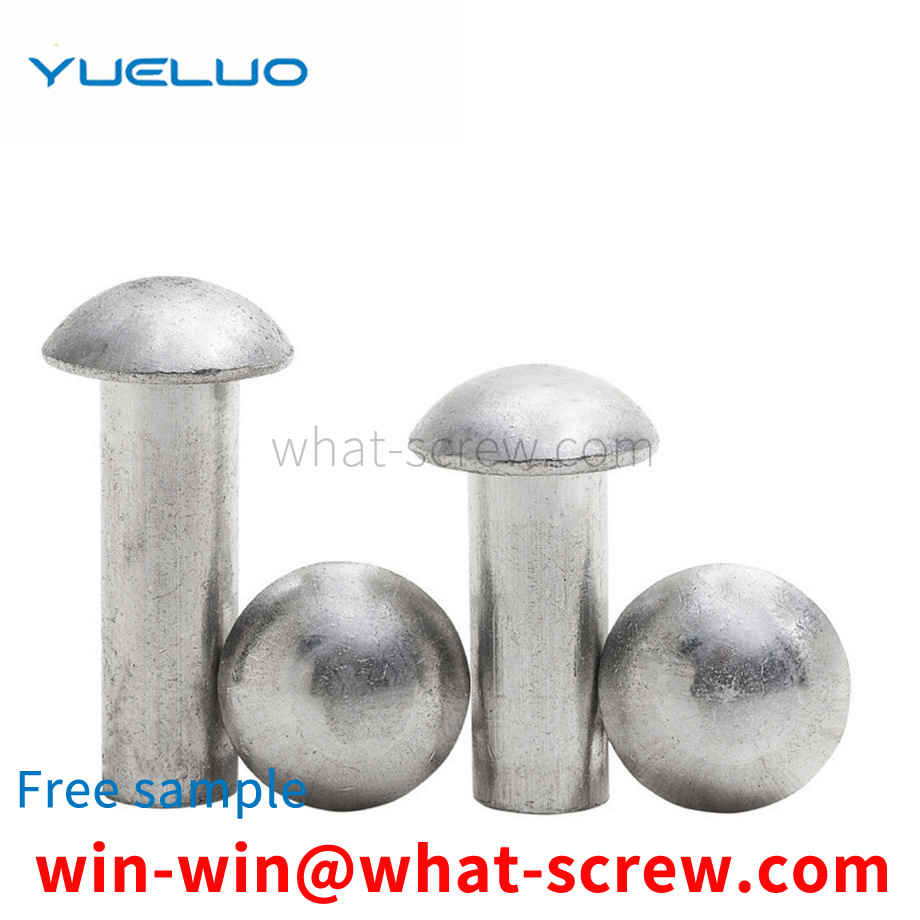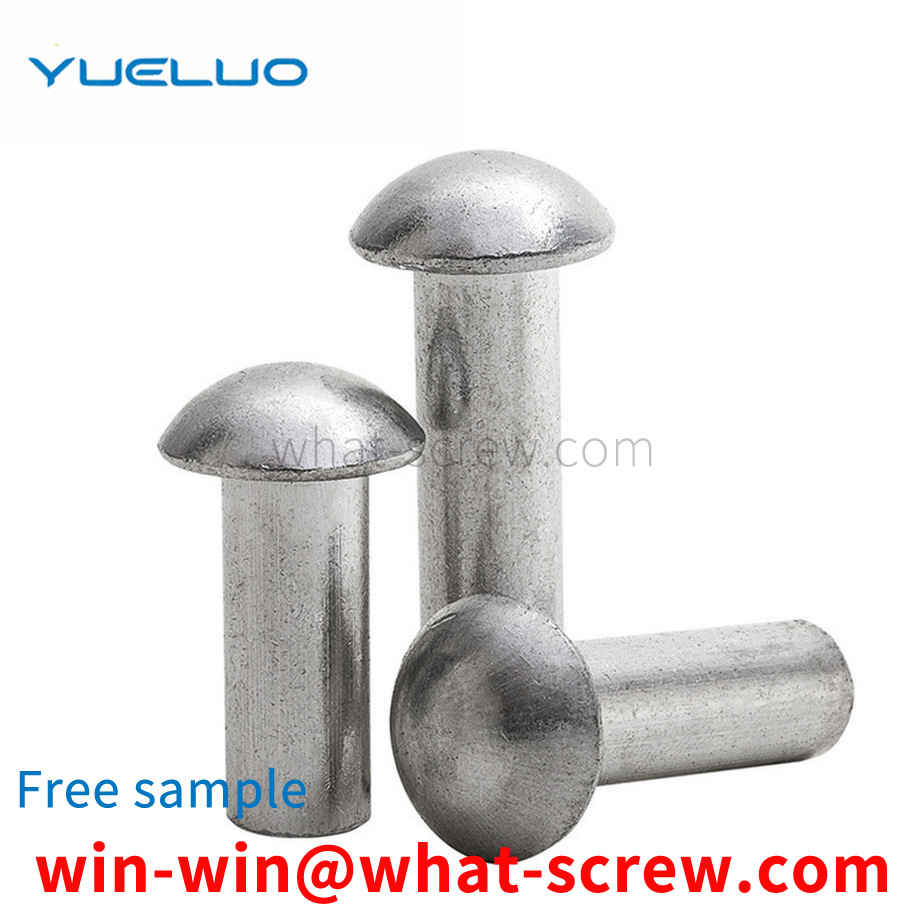In real life, rivet nuts are used. With different specifications and different uses, many people are familiar with this tool but don't know how to use it properly. In fact, rivet nut tools have manual and transmission, and now are rarely used for manual. If you choose to use electric rivet nuts in order to improve production efficiency, which of the two is more widely used? The following describes the use of electric rivet nuts and manual nuts. How to use the manual rivet nut tool: Insert the rivet nut into the drilled installation hole with a rivet mother tool to fix the rivet nut. (1) Screw the rivet nut onto the rivet nut tool 2) Use the rivet nut tool to insert the rivet nut into the drilled mounting hole. (3) Tighten the nut, and press the handles on both sides of the rivet nut tool to the direction of the middle round rod. You can only press it hard. Therefore, this pressure must be in place. It is forbidden to repeatedly squeeze the handles on both sides to damage the nut. Fastening thread in the form of inside. (4) The rivet nut tool is separated from the rivet nut: just loosen the ball head in the picture, and the tool will be separated from the nut after completely loosening.
GBT 3098.19-2004 blind rivets in my country are divided into: GB/T12615 closed oblate head blind rivets; GB/T12616 closed countersunk head blind rivets; GB/T 12617 open type countersunk head blind rivets; T 12618 Open-type oblate head blind rivets; the international standard is DIN7337; there are 1990 versions and 2004. The 2006 version is mainly the 2006 version.
When installing the ventilation duct, because the gap between the air duct and the wall and between the air duct and the air duct is deep and narrow, the arm cannot enter into it to operate, which brings about the installation of the screws and nuts at these positions. The following three methods are generally used: one is to directly break the wall for installation, but this method damages the building greatly, and cannot be used for the installation of screws and nuts in the gap between the air ducts; the other is to Set the inner flange in the air duct and connect it with bolts, which will reduce the effective cross-sectional area of the air duct and increase the resistance of the gas flow. Moreover, people need to enter the air duct for construction during installation. Considering the size of the air duct First, the supporting firmware with a high position and no force has certain hidden dangers; third, it is directly ignored and not done, but it is easy to cause the air duct connection is not tight and the air volume loss is large. The above-mentioned methods all have major construction defects, which not only waste a lot of manpower and time in the construction process, but also have the problem of low air supply efficiency.
High-strength fasteners must be quenched and tempered according to technical requirements. The purpose of heat treatment and tempering is to improve the comprehensive mechanical properties of fasteners to meet the specified tensile strength value and yield ratio of the product. The heat treatment process has a crucial impact on high-strength fasteners, especially its intrinsic quality. Therefore, in order to produce high-quality high-strength fasteners, advanced heat treatment technology and equipment must be available. Due to the large production volume and low price of high-strength bolts, and the threaded part is a relatively fine and relatively precise structure, the heat treatment equipment is required to have large production capacity, high degree of automation, and good heat treatment quality. Since the 1990s, the continuous heat treatment production line with protective atmosphere has dominated, and the shock bottom type and mesh belt furnace are especially suitable for heat treatment and tempering of small and medium-sized fasteners. In addition to the good sealing performance of the furnace, the quenching and tempering line also has advanced computer control of atmosphere, temperature and process parameters, equipment failure alarm and display functions. High-strength fasteners are automatically controlled and operated from feeding-cleaning-heating-quenching-cleaning-tempering-coloring to offline, which effectively ensures the quality of heat treatment. The decarburization of the thread will cause the fastener to trip before the resistance required by the mechanical properties is reached, which will cause the failure of the threaded fastener and shorten the service life. Due to the decarburization of the raw material, if the annealing is improper, the decarburized layer of the raw material will be deepened. In the process of quenching and tempering heat treatment, some oxidizing gas is generally brought in from outside the furnace. The rust of the bar wire or the residue on the surface of the wire rod after cold drawing will also decompose after being heated in the furnace, and some oxidizing gases will be generated by the reaction. For example, the surface rust of steel wire, which is composed of iron carbonate and hydroxide, will be decomposed into CO₂ and H₂O after heating, thus aggravating decarburization. Studies have shown that the degree of decarburization of medium carbon alloy steel is more serious than that of carbon steel, and the fastest decarburization temperature is between 700 and 800 degrees Celsius. Because the attachments on the surface of the steel wire decompose and synthesize carbon dioxide and water very quickly under certain conditions, if the furnace gas of the continuous mesh belt furnace is not properly controlled, it will also cause excessive decarburization of the screw. When the high-strength bolt is formed by cold heading, the raw material and the annealed decarburized layer not only still exist, but also are extruded to the top of the thread. For the surface of the fastener that needs to be quenched, the required hardness cannot be obtained. Its mechanical properties (especially strength and wear resistance) decreased. In addition, the surface of the steel wire is decarburized, and the surface layer and the internal structure have different expansion coefficients, and surface cracks may occur during quenching. For this reason, during quenching and heating, the top of the thread should be protected from decarburization, and the fasteners whose raw materials have been decarburized should be properly carbonized, and the advantages of the protective atmosphere in the mesh belt furnace should be adjusted to the original carbon-coated parts. The carbon content is basically the same, so that the decarburized fasteners are slowly restored to the original carbon content. The carbon potential is preferably set at 0.42% - 0.48%. The carbon coating temperature is the same as the quenching heating, and cannot be carried out at high temperatures , so as to avoid coarse grains and affect mechanical properties. The quality problems that may occur in the process of quenching and tempering of fasteners mainly include: insufficient hardness in the quenched state; uneven hardness in the quenched state; excessive quenching deformation; quenching cracking. Such problems in the field are often related to raw materials, quenching heating and quenching cooling. Correctly formulating the heat treatment process and standardizing the production operation process can often avoid such quality accidents.
leak-proof combined gasket relates to a gasket and solves the problem of short service life of the existing gasket. The combined gasket comprises: an O-shaped sealing ring, which is an annular sealing ring with an outer diameter of D and an inner diameter of E. The section diameter is A; the steel outer ring is a steel flat annular outer ring, which is sleeved on the outer surface of the O-ring, the inner diameter is F, and F=D, the thickness is B, B=0.785A ;The steel inner ring is a steel flat annular inner ring, embedded in the inner surface of the O-ring, the outer diameter is G, and G=E; the thickness is C, and C=B. When the O-ring in the combined washer is pressed by the bolt for sealing, it is positioned between the steel outer ring and the steel inner ring, and is protected by both of them, so that the tightening torque of the bolt can be reduced at least Double the sealing performance without reducing the sealing performance, extending the service life of the thread and reducing the production cost.
We have many years of experience in the production and sales of screws, nuts, flat washers, etc. The main products are: internal 6 angle screws, wear-resistant spacer studs, straight-through columns, copper inlaid injection molded copper nuts and other products, we can provide you with suitable products for you. Fastener Solutions.



















 Service Hotline
Service Hotline




